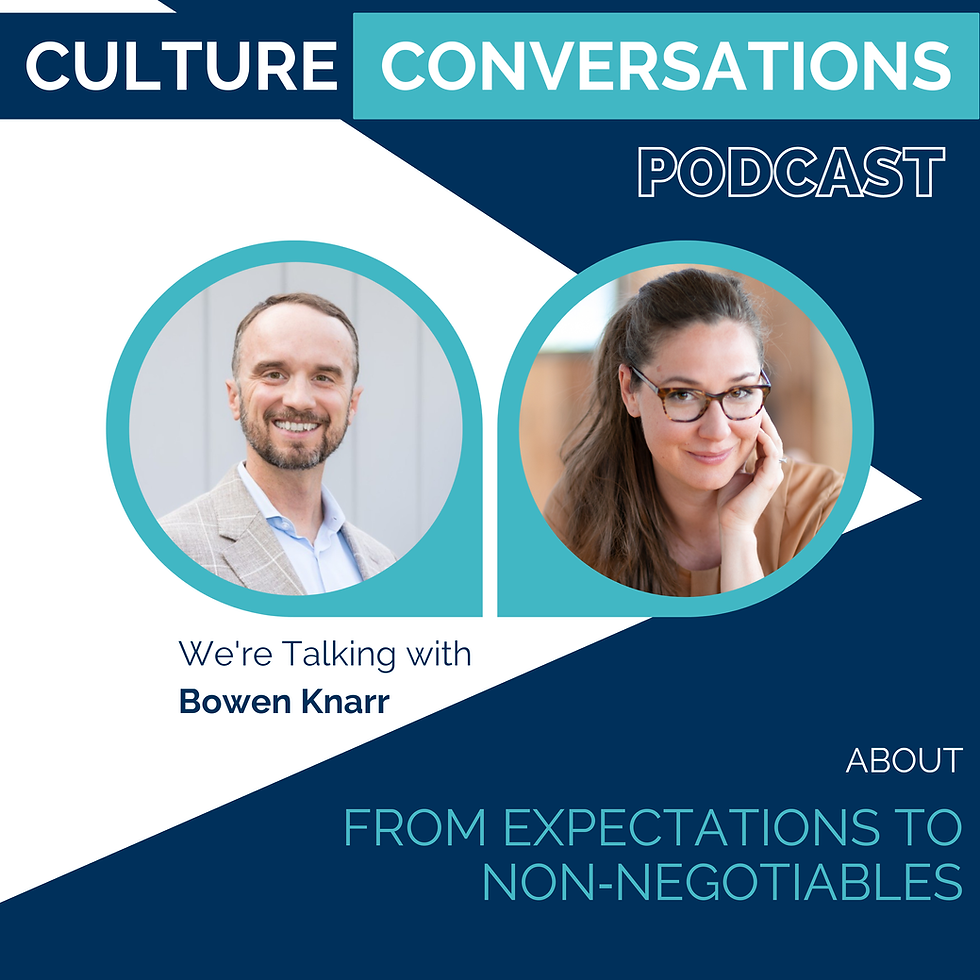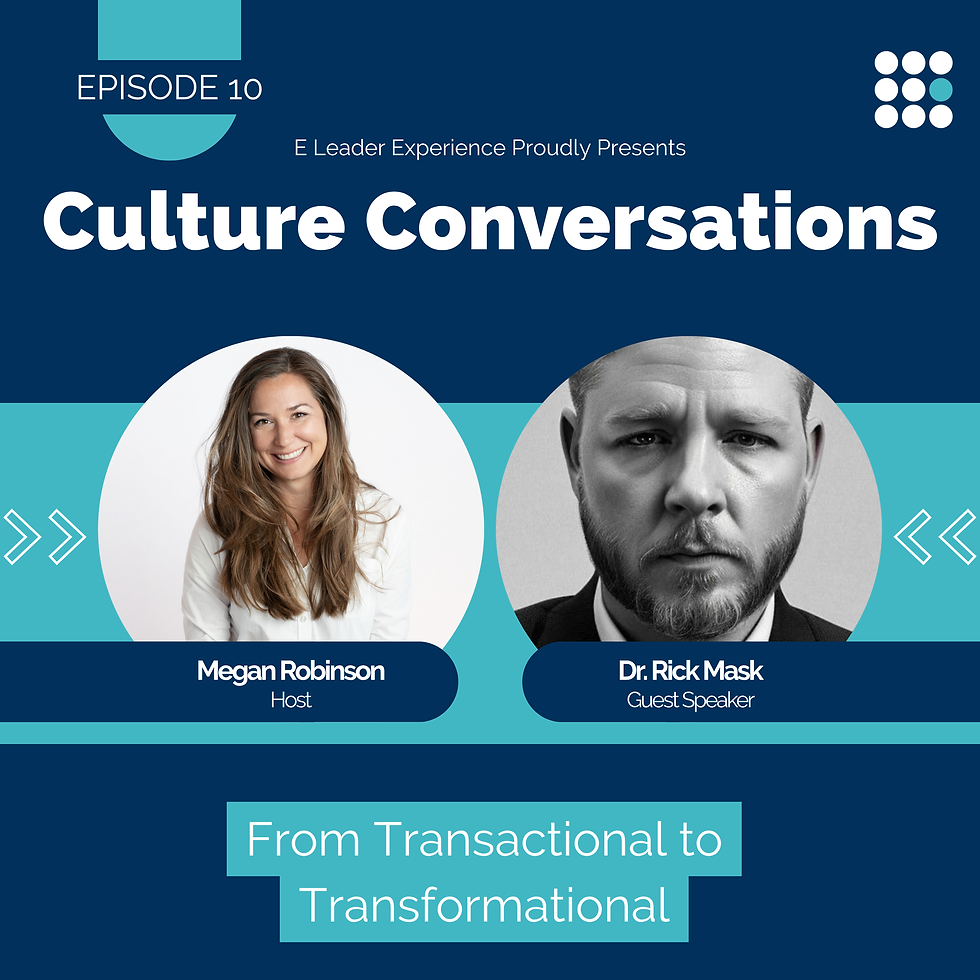Company Culture during COVID 19
- Megan Robinson

- Oct 28, 2020
- 3 min read
Updated: Jun 24, 2022

I like to think of this pandemic - or for that matter ALL of 2020 - as an amplifying year. What was broken before but may have been hidden is now out in the open. If things were going well, then you are sitting pretty - comparatively.
How this year has shifted business culture is being talked about ad nauseam...but is it really being talked about? We discuss the policies and procedural changes we need to make. But how is this affecting our companies as communities, our activities, and essentially our beliefs? Most people I talk to have been in a deep reflection on what they’re doing, where they are going, and what they want. This goes for organizations, employees, and of course, leaders.
These changes affect more than just an employee manual but adjust our attitudes and the company cultures. Here are 3 lenses to look at your own company’s culture. Consider a pre- and post-pandemic world and how things have changed, and what may need to shift to survive. The truth is without these foundations for a strong culture, you won’t make it.
Trust - Most corporate cultures come from a place of deep-seated distrust. We no longer trust employers to provide employment. We have to analyze the corporate environment to see who are allies and who are friends, who is trustworthy, and who is a potential threat. The work at home mandate was not just a technological challenge, but an exercise in trusting employees. And that’s what I love to see evolve.
For the first time, possibly ever, we are forced to put our trust in the employees that they will get the work done, manage themselves, do what is necessary…all without supervision. For many organizations, it was this mistrust that limited their work-from-home policies to begin with. I have heard countless stories of managers who did not trust their teams to self-monitor themselves. Now that we are forced to self-motivate and self-manage, we are working more than we ever have before.
People worked an average of 48.5 minutes more per day, compared with the pre-virus period. Source
Most organizations have been pleasantly surprised to see that things are still getting done, often at record rates despite employees not being micromanaged! It is changing how we view work and shifting deep-seated beliefs and attitudes towards the workforce.
Respect - These days we are all finding out what it means to me; and respect is no longer optional, but mandatory. This year has come with a new need for flexibility as we all navigate not just the typical business minefield, but each person’s needs. There is a shift from needing to respect someone’s desires to someone’s needs. We have downshifted to a need-based state for pure survival.
It’s respecting private and personal space via video conferencing. It’s respecting someone’s discomfort and safety needs. It’s respecting others’ needs in ways we never considered before. Pre-pandemic can you imagine negotiating with an employer to shift your working hours to accommodate home school?
Communication - How did your team communicate pre-pandemic? Was it short, direct, transactional? How well did you know each other? How much did you know about everyone’s private lives? How did you communicate your needs? How did you sell? How did you motivate and connect? All of this had to be re-established in 2020.
Thinking about an organization’s culture and how it communicates is the most telling aspect. Once learned, it is fluid and automatic and we often forget about the micro shifts we make to accommodate the culture we are in.
Across the board, communication has been affected, from needing to find new tools and outlets, to what is being shared and how that message is being received. More often than not we are experiencing more empathy, sincerity, and authenticity.
Some organizations even began to “over-communicate,” setting up consistencies, messages, and expectations to keep everyone updated as things change from day to day, hour by hour. But as we get fatigued by the year, some are keeping this steady stream of information flowing, while others are letting it dry up and return to a trickle. As we move away (or towards, who knows!) from a heightened state, it gives us the chance to evaluate what is needed and to find the right balance to make a lasting change.
The decisions we are making and the approaches we take will not affect what is just happening right now, but also for years to come. Culture always comes from the top and leaders will set the example. Consider your approach, attitudes, and actions towards each of these aspects and how it is affecting yourself, your team, and your organization.




Comments